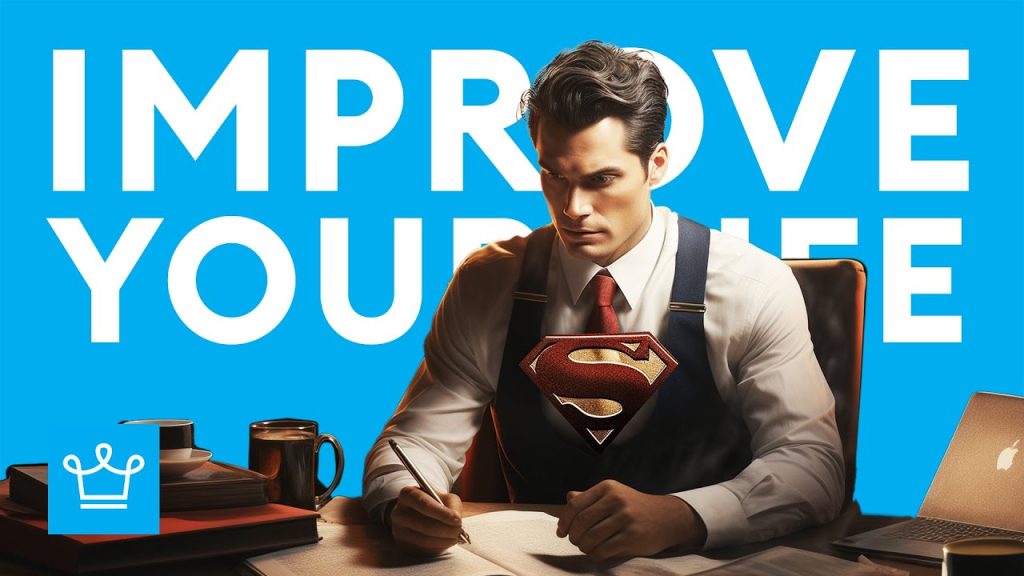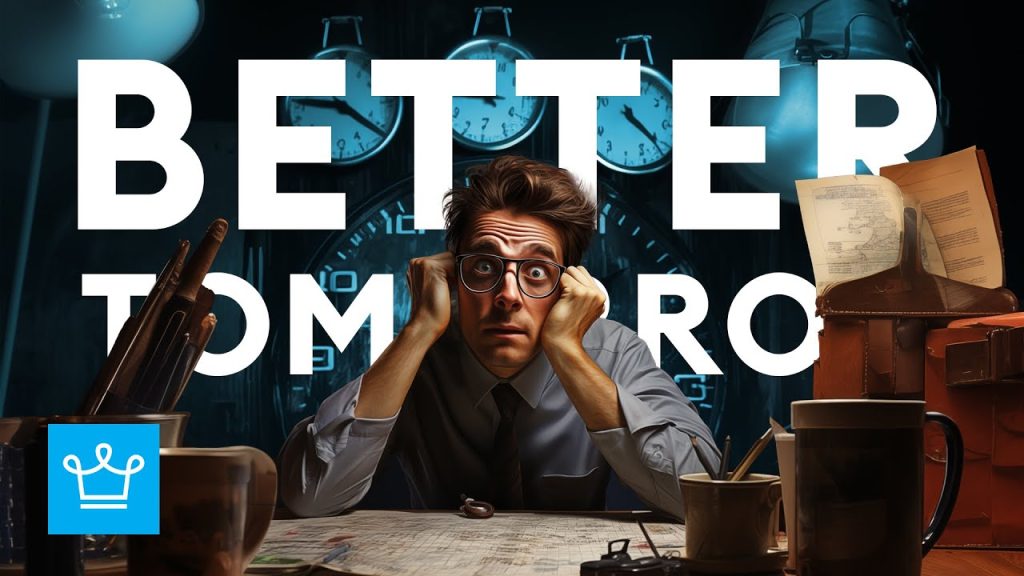Do You Keep Going Back To Buying Stuff From the Same Brands Again and Again? Here Is How Companies Get You Addicted.
The goal of all successful companies is to retain customers. They want the customer to use their product, service or skill and they know they’ve done a good job when their customers are brand loyal, will recommend you and feel like they are cheating on you if they use another product or service provider. Here are 15 Ways Companies Get You Addicted to their Products.
Welcome to Alux.com – the place where future billionaires come to get inspired. If you’re not subscribed yet, you’re missing out.
If you are not someone who is totally addicted to reading, then finishing this long article may get a bit difficult. Switch over to the video version:
With that done, let’s get straight into the article.
1
The Design of Habit-Forming Products
Creating a comfortable habit zone for customers is the first step for successful companies to get people addicted to their products.
We’ll be leaning a lot on the teachings and findings of Nir Eyal, author of “Hooked: How to Build Habit-Forming Products.”
As he describes on forbes.com, “Like nail biting, many of the decisions we make in our daily lives are made simply because that’s the way we’ve found satisfaction in the past. The brain automatically deduces that if the decision was a good one yesterday, then it’s a safe bet again today.”
So, the big question is, how do you create a habit-forming product?
2
The Formula Behind Any Behaviour
Eyal says behaviours are “done with little or no conscious thought.”
Aluxers, consider this. When you search for something online, you automatically go to Google. When you want to watch a video, YouTube is the first place to stop.
Firstly, we don’t even consider alternatives, and secondly… are there even alternatives? Nah, we’re kidding – but it proves that we are all hooked on those options. We are all in a habit that we are comfortable with and moving to another option will be challenging.
Fortunately, we rarely change our formula on Alux, and you are always our number one priority – so don’t forget to subscribe.
To form a habit does require a lot of repetition and here’s how we did it too.
3
Habits Are Repetitive
Here at Alux, we’ve become a brand name that emulates luxury, finance, and all the finer things in life… but in order to grow our subscriber base like we did, we had to ensure that we put out videos and articles daily and at the same time.
That way, our loyal subscribers could rely on us to give them what they needed, when they needed it. Following that repetitive formula has ensured a steady growth of our channel.
So, to be successful, companies need to find the angle they’ll take to draw you in.
For us, it was delivering timeously, daily content that you could learn and grow from.
Not only companies, you also need to develop good habits to have a better life. Check out 15 Habits of Organized People.
4
Companies Find a Hook To Draw You In
Nir Eyal calls this process of building a habit-driven strategy the Hook Model. You can listen to his book, “Hooked: How to Build Habit-Forming Products,” on Audible. It’s a valuable listen and will offer the listener:
- Practical insights to create user habits that stick.
- Actionable steps for building products people love.
- Behavioural techniques used by Twitter, Instagram, Pinterest, and other habit-forming products.
Remember to claim your free listen by heading alux.com/freebook.
His Hook Model has 4 parts: Trigger, Action, Reward and investment which we’ll break down next.
5
Trigger
Every habit needs a foundation. They need a trigger – something that starts the ball rolling. The obvious are external triggers:
Paid triggers – like advertisements.
Earned triggers – The user may have some investment in the product or service.
Relationship triggers – like word of mouth.
Owned triggers – Where the user has willingly subscribed to hear and receive more information about the company.
There are also internal triggers, where customers are driven by emotions, feelings and thoughts. On his website, nirandfar.com, Nir Eyal explains it as, “When a product is tightly coupled with a thought, an emotion, or a pre-existing habit, it creates an “internal trigger…” “Internal triggers manifest automatically in the mind and creating them is the brass ring of consumer technology.”
6
Action
The next step that successful companies take is to get the trigger reaction going. There are 3 parts to making action happen:
- Motivation
- Ability
- Simplicity
A brand’s identity needs to motivate their customers. Here are some examples:
KFC – It’s Finger Lickin’ Good.
Nike – Just Do It.
Coco Cola – Open Happiness.
Next is ability… is it possible for the customer to purchase KFC, Nike or Coca-Cola? And if yes, then how simple is the process? Because, if it’s a long-complicated process, sorry but you’ve lost before you’ve even begun!
Then, your customer needs to be rewarded for choosing your brand…
7
Reward
To be successful, companies need to keep customers coming back, so they need to motivate them to do that. Rewards are good ways of keeping consumers addicted. There are 3 areas where companies, products, brands, or services can offer rewards:
Rewards of the Tribe – alternatively known as social rewards. These rewards are not physical – they’re in the form of likes, comments, followers, re-tweets etc. They’re the kind of rewards that make the buyer feel like they’re accepted and part of their community.
Rewards of the Hunt – Right, so you went online to search for something, or quickly reply to a Facebook message and next minute, an hour has passed, and you’re amazed at how quickly the time went by.
That’s because you’re being “rewarded” for your initial search. Now you’re being fed with other information, suggestions or recommendations. We know, it doesn’t sound like a reward, but that’s not how companies see it.
Rewards of the Self – This reward is the result of intrinsic motivation. You’re faithful to a brand or product because you’re benefiting from it and so you remain motivated to keep using it. It could be giving you a competitive edge over others or makes what you do slightly easier; everyone has their own internal reasoning behind this one.
8
Investment
How much effort or time has the user put into this product or business? For example, you have a Facebook account that you’ve probably threatened to close for… ever. But one of the reasons you haven’t is because it’s loaded with your memories.
You love getting the memories on your feed… well for the most part anyway… there are some we’d like erased forever.
Maybe you’re still holding onto your Hotmail account for dear life, because you never know when you might want to re-read those emails from 2000?
We’re dependant on certain things because we’ve invested so much into them… a lot like relationships.
9
Habit Forming Products Can Improve Lives
Aluxers, before you think negatively of habit-forming products, consider the following. In a podcast by Hot Jar, Eyal was interviewed by David Peralta, and they spoke about addictions.
Eyal brought forward that when it comes to creating an addiction to a product, it refers to “products that improve the quality of life of their users.”
As he says, people become addicted to all sorts of things that are not good – like alcohol, food or sex… but one can enjoy all those things without being addicted.
We all have good habits and bad habits, and the aim is to be addicted to items that bring value to our lives. When asked if successful companies had a moral or ethical obligation to provide products that brought value, Nir replied, “Not just a moral and ethical obligation, a business imperative.”
10
More on the Man Behind the Book – Nir Eyal
Any Google search on getting you addicted to a company’s products brings up the name Nir Eyal. He is an Israeli-born American author, lecturer and investor with work featured in Harvard Business Review, TechCrunch, Time, The Week and Psychology Today.
He has published 2 books, the one we mentioned already and the second is Indistractable: How to Control Your Attention and Choose Your Life.
On his website, nirandfar.com, he’s analysed Slack, Fortnite, Amazon’s Echo, Tinder, and The Bible App in “The Hooked Model in Action.” He’s recently published one on Clubhouse called, “Will Clubhouse be a Habit or Has-Been?”
It’s definitely worth a read and we also recommend you watch our video:
11
How To Build Habit Forming Products in 5 Steps
A company will need to ensure the following 5 steps are addressed in order to retain customers and create habit-spending from them.
What internal trigger will the product inflect?
What external trigger will they use? Will it be advertising? Rewards systems? Sponsorships?
What is the simplest way to get the buyer to purchase and offer a reward?
Will the reward satisfy a need, but still leave space for the user to come back for more?
If not, what can you add to keep the consumer coming back?
As Nir Eyal puts it, “Companies who form strong user habits enjoy several benefits to their bottom line.”
12
Companies Use Heuristics Methods Too
There are many tricks and tools that successful companies use to get you buying their product, whether that retains you or not, is another matter.
Successful companies love the Scarcity Effect, which will throw out bold claims like “Only 5 left,” or “While Stocks Last.” Aluxers, we can assure you they haven’t spent thousands of dollars on that advertising campaign if they’ve only got 5 left in stock!
Even in an App like Clubhouse, heuristics methods are being used. Clubhouse is quite exclusive, and people want in… it’s as easy as that.
13
Examples of Highly Addictive Products
The best example of a highly addictive product is Facebook. According to businessofapps.com, “2.8 billion monthly active Facebook users by the end of 2020,” and “1.8 billion of Facebook users (66%) use the app on a daily basis.” Now if that doesn’t scream addiction, we don’t know what will.
Digitalmarketer.com brings forward plenty of suggestions including Apple, Spotify, Amazon, Bumble, and Toms. With Apple, they highlight that, “By staggering the launch of each new development, Apple has created an ecosystem in which its customers are conditioned to “need” the newest products as soon as they come out.” They add that each product has done well to create an
14
The First Steps To Getting People Addicted to Your Product
In order to get customers to continue engaging in and purchasing your product or service, you need to do a lot of behind-the-scenes work. You need to work on customer retention continuously.
By doing the following, you are in the right direction for people getting addicted to your product:
Firstly, ensure you offer incredible customer service. From there, figure out how best to communicate with your customers. Receiving a Signal message at 1 in the morning is not an option. Reward your loyal customer, maybe a buy 9 get 1 free promotion. Ask for feedback and listen to the feedback. If you can learn and grow from it, all the better. Ensure you give your customers a reason to always come to you first.
15
Don’t Sit Back and Wait For It to Happen
Aluxers, even the most brilliant ideas, products or services have bust because of zero follow through. You can’t blow hot and cold when it comes to getting your product or service out there. Even when things are going well, don’t expect things to last. Keep improving, keep learning and keep listening to what’s happening with other similar services or products.
And remember what Bill Gates once said, “your most unhappy customers are your greatest source of learning.
Question:
What product or service do you believe is addictive? We’d love your input Aluxers.






